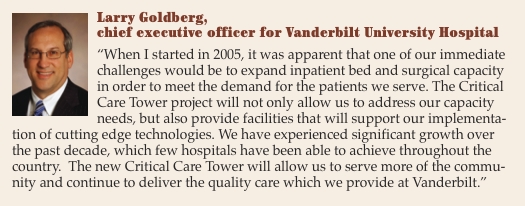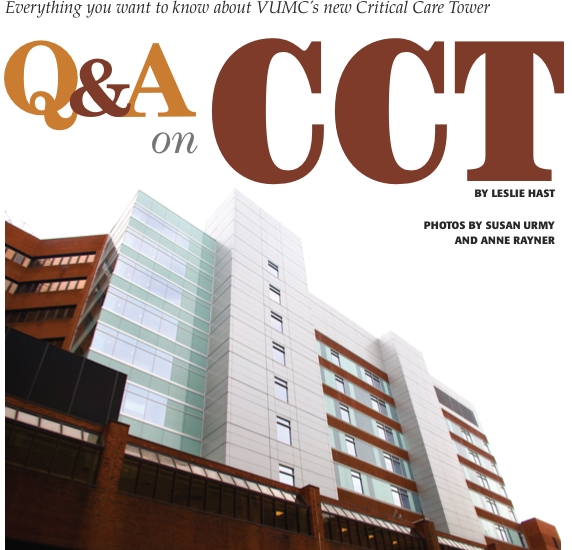This month, the Critical Care Tower is ready to take its place alongside the
north and south towers of Vanderbilt University Hospital. The 11-story addition will house 12 new operating rooms and 102 new patient beds
in the three intensive care units that will move into the space—medical, surgical and neurological.
A lot has changed since VUH originally opened in 1980, and the new tower has the
space and technology to provide the highest quality care to Vanderbilt’s sickest patients. The new tower is just one item on a long list of changes to a hospital that was
designed with renovation in mind, including the addition of Lifeflight’s helipad, two complete renovations of the emergency department and the
relocation of the Children’s Hospital.
To give you a glimpse of what makes this tower so great and answer your burning
questions (like where exactly the entrance is), we offer the following Q&A.
When will the Critical Care Tower open?
Patients will move into the tower on Nov. 14. The operating rooms will open a
few days later.
How much space has been added?
The CCT is 329,000 total square feet, but not all of that space will be used
immediately. Three of the tower’s 11 floors have been shelled for future growth.
How much did this cost?
About $169 million. Original construction of VUH in 1980 cost $65 million, but
when adjusted for inflation, cost of the original hospital and the CCT are
about the same.
Why was this tower necessary?
Quite simply, we need more space. In the nearly 30 years since VUH opened, a lot
has changed in medicine and there just isn’t enough space to provide the care that critical patients require. The patient
rooms are too small for the high-tech equipment used today, and support spaces
do not accommodate all the necessary supplies. There are not enough operating
rooms, and many of them are too small for high-tech surgeries. Not all rooms
are private, and they do not have bathrooms or let family stay near their loved
ones. There is limited space for staff to work and document, and vertical
transportation abilities have not kept pace with growth.
Did the economic downturn affect the plans at all?
Plans for the CCT have not changed significantly since the economic downturn.
The original plan called for an immediate renovation in VUH of surgical support
areas and spaces vacated by units moving to the CCT. Those projects are still
in the planning phase. Floors 7 and 10 of the CCT will be shelled for future
growth. Floor 2 was originally planned for patient and family amenities, but it
will be shelled for now.



